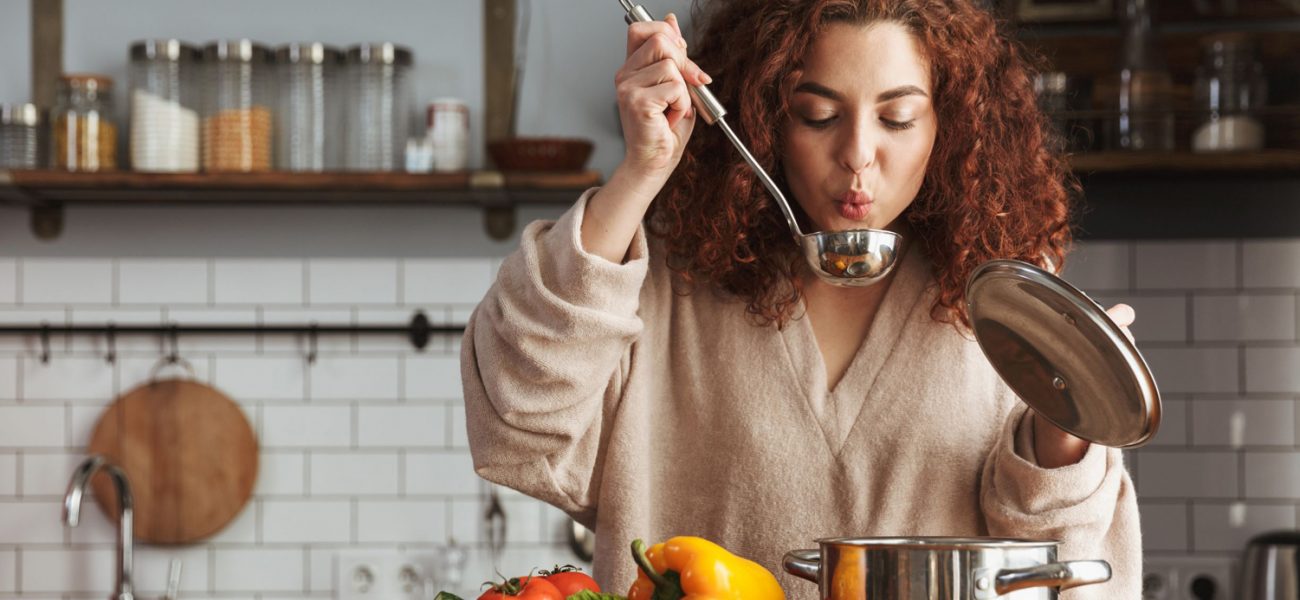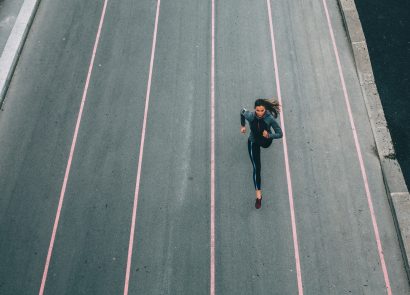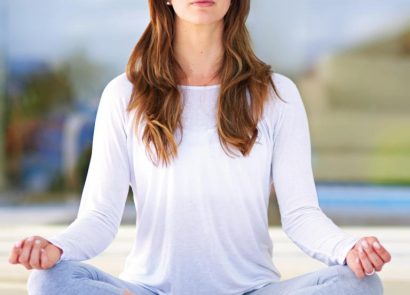If you’re a coeliac, going gluten-free could be a great way to manage those gnarly gut symptoms. Gluten is found in the grains wheat, barley and rye, and this guide will explain the alternatives along with tasty recipes to serve up.
What is a gluten-free diet?
A gluten-free diet is literally what it says on the tin. You exclude gluten, commonly found in bread, pasta and rice. Are these your favourite foods? Don’t fret. We’ve selected tasty gluten-free lunch ideas and delicious gluten-free bakes, plus our experts give the low-down on whether popular legumes are something you can include in your diet, and when to look for that all-important gluten-free symbol.
Should I go gluten-free?
There has definitely been a rise in the popularity of gluten-free diets, with more and more people ordering gluten-free meals at restaurants, as well as leading a gluten-free lifestyle.
If you’ve been diagnosed with a wheat allergy or gluten intolerance, or suffer from coeliac disease, you should of course avoid it, and be sure to find another source of important vitamins. Common symptoms of coeliac disease and gluten sensitivity include upset bowels (bloating, gas, diarrhoea, stomach pain etc) and also other issues such as fatigue and headaches.
While gluten itself does not have any nutritional value, foods such as wheat, rye and oats, in which gluten is found, are great sources of vitamin B and iron.
Am I gluten intolerant?
Gluten is a common tummy-upsetter, but cutting out food groups should only be done if necessary. In fact, misdiagnosing food intolerances has become so popular that a new word has even been coined for it – nutrichondria. This refers to a preoccupation with the negative parts of your diet and a tendency to self-diagnose food intolerances based on supposition or flawed evidence.
You can actually see for yourself if you have a gluten sensitivity. “Diagnosing a food intolerance is often a process of elimination,” advises dietitian Rick Miller. “You may experience changes in bowel habits such as constipation, diarrhoea, bloating or abdominal cramps and, more rarely, skin issues or headaches.”
NHS guidelines for diagnosing a food intolerance involve keeping a food diary and monitoring what you eat, recording how the foods you eat make you feel, and when the symptoms come on. By doing so, you may be able to pinpoint which foods are a trigger.
After this, you could try an elimination diet, for which you purposely stop eating suspected foods and monitor the effect this has. Do this for two to six weeks and see if your symptoms improve. After this period is up, reintroduce the foods to see if your body reacts differently.
Going gluten-free: your common questions
Ever wondered what makes a lemon sponge gluten-free? Well, it probably won’t contain wheat or rye flour, but it will contain a replacement substance to give you an equivalent item. “Food manufacturers will add buzzwords to their products to make them more appealing to market trends,” explains Sarah Anderson, Harley Street nutritionist.
“Sometimes you’ll see a food label saying a product is wheat-free, but that doesn’t necessarily mean it’s gluten-free.” These food products don’t just contain gluten-free flour and flour blends, they also come with stabilisers and thickening agents, such as locust bean gum, a natural food additive that comes from the seeds of the carob tree.
You’ll often see locust gum listed in the ingredients of the products such as breakfast cereals, bread and sauces. “Locust gum originates from a plant, but it’s still a food additive and so you’ll find it in processed food,” says Sarah.
Naturally gluten-free food
“If you do suffer from coeliac disease, then you’ll know that minimally processed fresh foods are a crucial part of a gluten-free healthy diet and meal plan. Foods that are naturally gluten-free include fruits, vegetables, fresh meat, fish and legumes, as well as certain whole grains and oils. These are all unprocessed, and are more gut-friendly,” says Sarah.
‘Is rice gluten-free?’, ‘are oats gluten-free?’ or ‘is quinoa gluten-free?’ may just be some of the questions you have for Google when you’re trying to eat less gluten or suffer with coeliac disease, and the answer is yes to all of these, so you won’t be missing out on too many grains and carbs.
If baking is your forte, you might want to try using a corn flour that’s gluten-free, instead of your run-of-the-mill plain wheat flour – it works just as well! You can make gluten-free pizza, gluten-free biscuits and gluten-free pastry with olive oil and this alternative.
Gluten-free recipes
Now for the tasty part. You’re equipped with ingredients that are gluten-free, so you can make everything from gluten-free Yorkshire pudding, gluten-free birthday cake or even gluten-free fish and chips! But if you’re after something a bit healthier, try this beetroot salsa Mexican Buddha bowl.
If you’ve ever searched ‘gluten-free restaurants near me’ in a mad hurry, you’ve probably already wondered about whether or not you can eat things like croissants, ice cream and your favourite cakes. And, while you may think that a gluten-free chocolate cake or gluten-free brownies won’t be as tasty as the original, we’ve selected the perfect desserts that’ll fool anyone into believing that they’re no different. Why not try this delicious gluten-free rocky road rice cake recipe? Or if you’re more interested in traditional desserts, how about this apple crumble recipe? As a bonus, it’s the perfect way to use up leftover apples!
Gluten-free banana bread
Gluten-free banana bread really was the symbol for peak lockdown, but a gluten-free bread recipe? Ask and you shall receive.
Ingredients:
- 150g porridge oats
- 150g self-raising gluten-free flour
- 1 tsp bicarbonate soda
- ¼ tsp baking powder
- 1 tsp cinnamon
- 2 scoops Vanilla Vega Essentials or Clean* Protein
- Pinch of salt
- 2 tbsp ground flaxseed
- 5 tbsp water
- 4 ripe bananas
- 200g maple syrup
- 60g melted vegan spread
- 150ml oat milk
Method:
- Preheat the oven to 170° fan. Spread all the oats in a single layer on a baking tray lined with parchment. Place in the oven and toast for 8 to 10 minutes, until very light golden, stirring once halfway through. Set aside to cool.
- Line two 20 x 6cm loaf tins with parchment paper so that two sides overhang like handles. Lightly mist with nonstick spray.
- In a mixing bowl, mix together the gluten-free flour, bicarbonate of soda, baking powder, cinnamon, Vega and salt. Stir in the toasted oats. Set aside.
- In a small bowl whisk the flaxseed with 5 tbsp of water and leave to one side to gel for 5 minutes.
- Mash the banana in the bottom of a large mixing bowl. Whisk in the maple syrup, melted vegan butter and oat drink. Whisk in the flaxseed gel.
- Add the dry ingredients to the wet mixture. By hand with a spatula, stir slowly and gently, stopping when the flour disappears and everything is thoroughly combined. Pour the batter into the 2 prepared loaf tins, making sure to leave 1cm at the top.
- Bake for 20 minutes, then loosely cover the tins with foil and return to the oven for a further 20 mins.
- Leave to cool in the loaf tins for an hour and then remove and serve.
Gluten-free pancakes
Fancy something sweet for breakfast? These gluten-free pancakes are the perfect way to start your morning. They’re vegan, too!
Ingredients:
- 50g of blueberries
- 150ml unsweetened almond milk
- 100g oats
- 1 tsp baking powder
- Pinch of salt
- ½ tsp ground cinnamon
- 1 ripe banana
- 1 tsp vanilla extract
- 1 tsp coconut oil
- Honey or maple syrup, for serving (optional)
Method:
- Grind the oats down to flour in the food processor then tip into a bowl and mix with the baking powder, salt and cinnamon.
- Slice the blueberries in half.
- Place the banana, milk and vanilla extract in the food processor and blend until smooth. Pour the wet mixture into the dry mixture and stir until fully combined, then gently stir in the blueberries.
- Heat one tablespoon of coconut oil in a frying pan. Spoon a few tablespoons of the batter into pools in the pan and for a few minutes, then flip over and cook for a further minute until cooked through. Repeat with the rest of the mixture.
- Serve the pancake with a few tablespoons of drizzled honey or maple syrup, plus leftover extra blueberries.



















